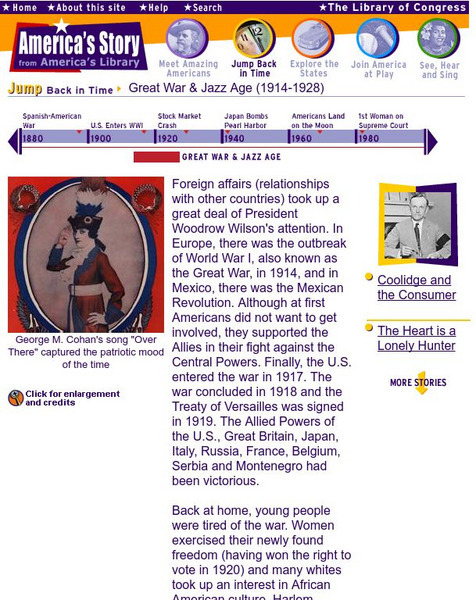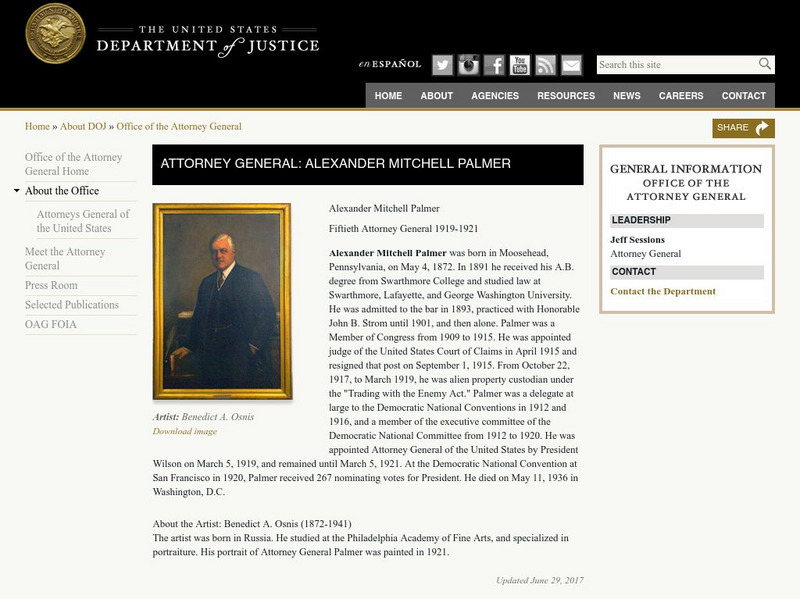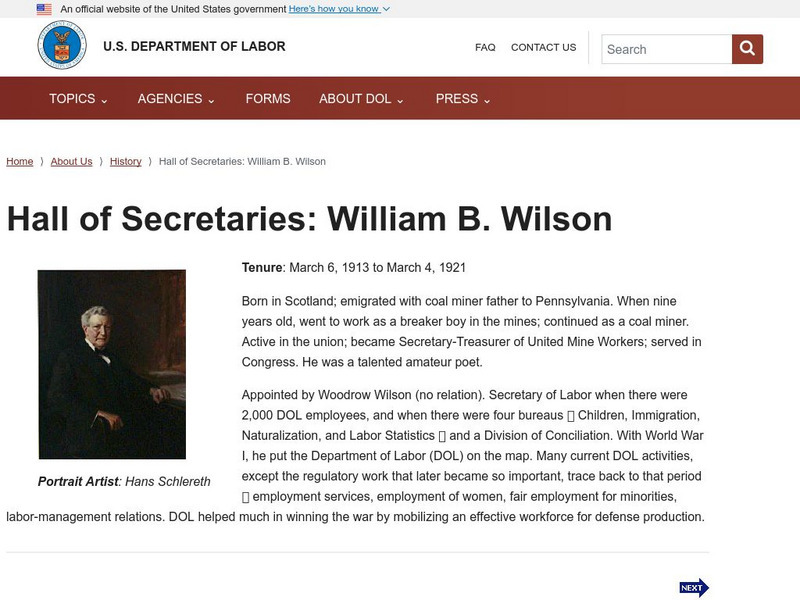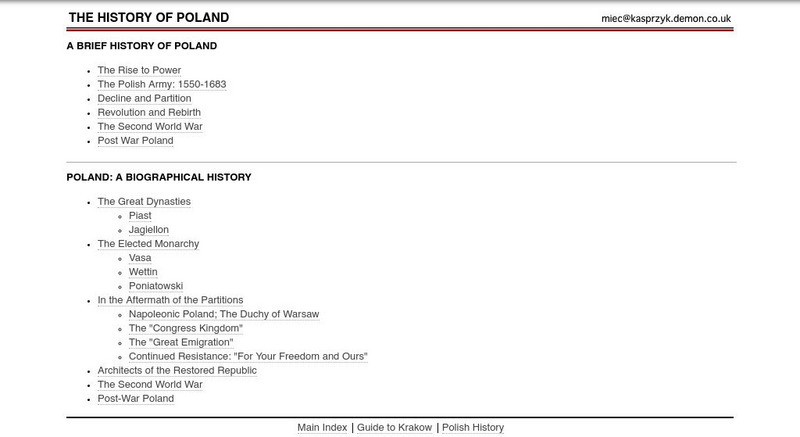Khan Academy
Khan Academy: Us History: 1890 1945: The League of Nations
After World War I, US President Woodrow Wilson helped to build an international peacekeeping organization.
Library of Congress
Loc: America's Story: Great War & Jazz Age (1914 1928)
This Library of Congress time-line series surveys World War I and the Jazz Age. When World War I broke out in Europe, many changes were going on in the United States. Women were voting for the first time and African-American culture was...
Digital History
Digital History: Neutrality and the Lusitania [Pdf]
American neutrality in World War I was sorely tested with the attack and sinking of the passenger ship, Luisitania. Read information about the attack and find conflicting reactions by Franklin Roosevelt and William Jennings Bryan about...
Digital History
Digital History: The Rise of the Dictators [Pdf]
Use this lesson plan to explore the economic and political conditions in Europe after World War I as a result of the Treaty of Versailles that led to the rise of dictators in several countries. Read about the rise of Lenin and Stalin in...
Other
Wwi Resource Centre:the Politics of Pecuniary Aggrandizement: 1912 1920
A chapter from a 1937 book by Ferdinand Ludnberg, America's 60 Families, discusses how World War I was financed and who profited from the war. About halfway through the page is mention of the War Industries Board and the heads of...
Digital History
Digital History: The United States Wwi
This site explains how Germany resuming unrestricted submarine warfare contributed to the US entering WWI. Site is well-written, informative, and contains great details.
US Department of Justice
Office of the Attorney General: Alexander Mitchell Palmer
See the official portrait and read a brief biography of Alexander Mitchell Palmer, who was Wilson's Attorney General from 1919-1921.
Oregon Secretary of State
Oregon at War: Before the War America's Strained Neutrality
Read about the attempts of the United States to remain neutral during World War I raging in Europe. Find out what finally made U.S. entrance into the war inevitable.
Digital Public Library of America
Dpla: World War I: America Heads to War
The sources in this primary set document explore the United States' brief but eventful involvement in World War I. Includes teaching guide.
Curated OER
Wikipedia: National Historic Landmarks in New Jersey: Prospect
A fine example of John Notman's architecture. It formerly served as the official home of the President of Princeton University, and is now the faculty club. Woodrow Wilson lived from 1902 to 1910, prior to entering politics.
Other
Ibew: Clayton Antitrust Act of 1914
Read a brief description of the Clayton Antitrust Act, which Samuel Gompers considered the Magna Carta of labor legislation.
Digital History
Digital History: America at War: The United States Enters the War
A look at American neutrality at the start of World War I, its favoring of the allies, and the reasons the United States entered the war in 1917.
US Department of Labor
U.s. Department of Labor: William B. Wilson
The U.S. Department of Labor provides a portrait and a biography of the man who served as Wilson's Secretary of Labor from 1913-1921. William B. Wilson is given a brief biographical sketch, with good factual information being provided.
Other
Kasprzyk's Website: A Summary of Poland's History
A description of the history of Poland, starting with the Piast dynasty and moving forward to the current year.
Independence Hall Association
U.s. History: America in the First World War
A brief overview of the United States in the World War I era. Read about initial American neutrality, American entrance into the war, and the American homefront.
Curated OER
Educational Technology Clearinghouse: Clip Art Etc: William Jennings Bryan
William Jennings Bryan was the Democratic Party nominee for President of the United States in 1896, 1900 and 1908, a lawyer, and the 41st United States Secretary of State under President Woodrow Wilson.




![Digital History: Neutrality and the Lusitania [Pdf] Website Digital History: Neutrality and the Lusitania [Pdf] Website](https://d15y2dacu3jp90.cloudfront.net/images/attachment_defaults/resource/large/FPO-knovation.png)






